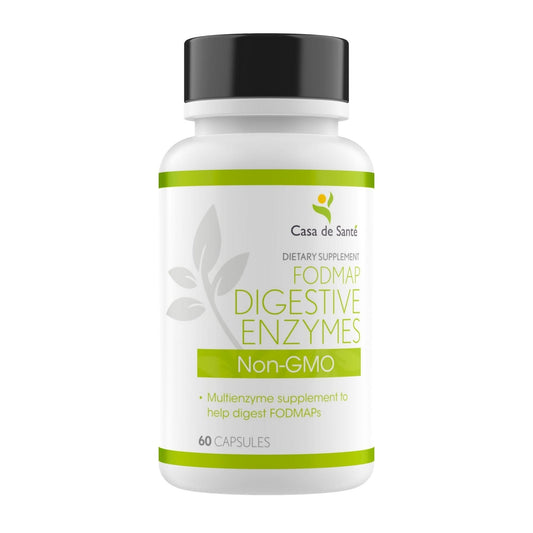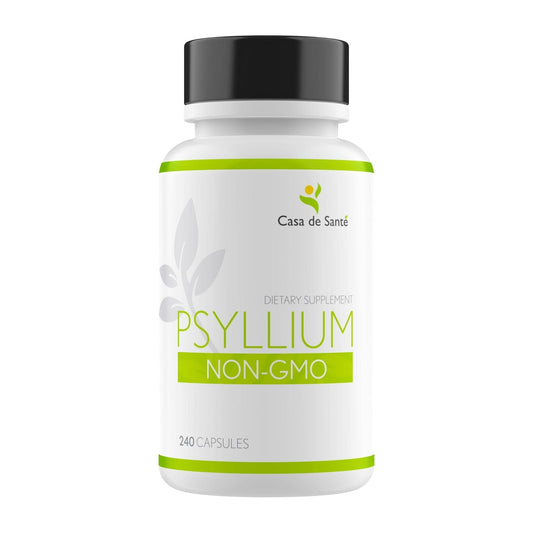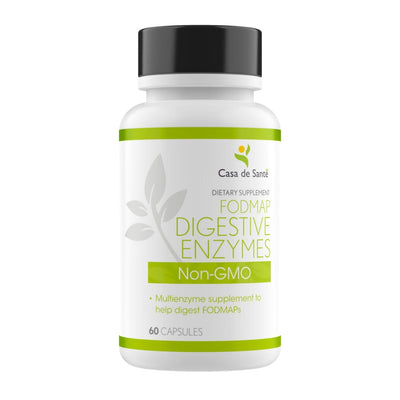What Are Galactooligosaccharides? A Comprehensive Guide
What Are Galactooligosaccharides? A Comprehensive Guide
Galactooligosaccharides, often abbreviated as GOS, have gained significant attention in the world of nutrition and gut health. These complex carbohydrates might sound intimidating with their scientific name, but they play a crucial role in maintaining digestive wellness and supporting our immune system. Whether you've heard about them in probiotic supplements, functional foods, or scientific literature, understanding what GOS are and how they benefit your body can help you make informed dietary choices.
Understanding Galactooligosaccharides: The Basics
Galactooligosaccharides are a type of prebiotic fiber composed of plant sugars linked together in chains. Specifically, they consist of galactose molecules connected to a glucose molecule. Unlike many other carbohydrates, GOS resist digestion in the upper gastrointestinal tract, allowing them to reach the colon intact where they serve as food for beneficial gut bacteria.
What makes GOS particularly interesting is their natural presence in human breast milk, suggesting their evolutionary importance in developing healthy gut microbiota in infants. This natural occurrence has led to their inclusion in many infant formulas to mimic the benefits of breast milk for babies who aren't breastfed.
Chemical Structure and Properties
From a chemical perspective, galactooligosaccharides are classified as oligosaccharides, meaning they contain between 3-10 sugar units. The specific structure typically includes a terminal glucose molecule with 2-6 galactose units attached. This unique arrangement is what prevents human digestive enzymes from breaking them down, allowing them to function as prebiotics.
GOS are water-soluble, which makes them easy to incorporate into various food products without significantly altering taste or texture. They have a mildly sweet flavor profile (about 30-35% as sweet as sucrose), making them potential candidates for sugar reduction in certain food applications while adding functional benefits.
The structural configuration of GOS also contributes to their stability across a wide pH range and their resistance to high temperatures. This remarkable stability allows them to withstand many food processing methods including pasteurization, UHT treatment, and even some baking applications. Unlike some other prebiotic fibers that degrade under acidic conditions or high heat, GOS maintain their prebiotic functionality even after processing, making them exceptionally versatile ingredients for the food industry. Their molecular structure also influences their fermentation pattern in the gut, with different chain lengths being metabolized at varying rates by different bacterial species, creating a sustained prebiotic effect throughout the colon.
Natural Sources vs. Commercial Production
While GOS occur naturally in some foods like legumes and certain dairy products, the concentrations are relatively low. Commercial GOS are typically produced through enzymatic processes using lactose (milk sugar) as the starting material. The enzyme β-galactosidase converts lactose into GOS through a process called transgalactosylation.
This commercial production allows for higher concentrations of GOS than would be found naturally, making it possible to create functional food ingredients and supplements with meaningful prebiotic effects. The production process can be carefully controlled to create specific chain lengths and structures, optimizing the prebiotic potential of the final product.
The industrial production of GOS has evolved significantly over the past few decades, with innovations focusing on enzyme optimization and purification techniques. Modern manufacturing facilities employ specialized β-galactosidase enzymes sourced from organisms like Bifidobacterium bifidum, Aspergillus oryzae, and Kluyveromyces lactis, each offering different advantages in terms of conversion efficiency and product specificity. The source of lactose also matters significantly—while dairy whey (a cheese-making byproduct) serves as the primary substrate, research into non-dairy alternatives using plant-based sugars is expanding to meet growing demand for vegan-friendly prebiotic options. These advancements have not only improved GOS yield and purity but have also reduced production costs, making these beneficial compounds more accessible for widespread incorporation into everyday foods.
Health Benefits of Galactooligosaccharides
The primary benefit of GOS lies in their prebiotic activity. By selectively feeding beneficial bacteria like Bifidobacteria and Lactobacilli in the gut, they help establish and maintain a healthy microbiome balance. This selective nourishment of good bacteria is often referred to as the "bifidogenic effect," and it's the foundation for many of the health benefits associated with GOS consumption.
Digestive Health Improvements
Regular consumption of GOS has been linked to improved bowel function and regularity. As beneficial bacteria ferment these prebiotics, they produce short-chain fatty acids (SCFAs) like butyrate, which serves as the primary energy source for colon cells and helps maintain intestinal barrier integrity.
Clinical studies have shown that GOS supplementation can help alleviate symptoms of irritable bowel syndrome (IBS), particularly constipation. The fermentation process also creates a slightly acidic environment in the colon, which inhibits the growth of potentially harmful bacteria and promotes overall gut health.
Additionally, GOS may help reduce bloating and gas over time as the gut microbiome adapts to their presence, though some individuals might experience temporary digestive discomfort when first introducing them to their diet.
Immune System Support
The relationship between gut health and immune function is increasingly recognized by scientists, and GOS play a significant role in this connection. By promoting beneficial bacteria growth, GOS indirectly support immune function through several mechanisms.
Research indicates that GOS consumption can increase the production of secretory IgA antibodies, which form a crucial first line of defense against pathogens in the gut. Furthermore, the SCFAs produced during GOS fermentation have anti-inflammatory properties that may help regulate immune responses throughout the body.
Mineral Absorption and Bone Health
Another benefit of GOS consumption is improved mineral absorption, particularly calcium and magnesium. The fermentation of GOS lowers the pH in the colon, which increases the solubility of these minerals, making them more available for absorption.
This enhanced mineral absorption may contribute to better bone health, especially important for growing children and older adults at risk for osteoporosis. Several studies have demonstrated increased calcium absorption with regular GOS intake, suggesting potential long-term benefits for skeletal health.
GOS in Food Products and Supplements
The food industry has embraced galactooligosaccharides for their functional benefits and relatively neutral sensory profile. You'll find GOS in various products, from infant formulas to yogurts, beverages, and baked goods. Their stability during food processing makes them particularly valuable as functional ingredients.
Common Commercial Applications
Infant formula represents one of the most significant applications for GOS. Manufacturers add them to mimic the oligosaccharide composition of human breast milk, helping formula-fed babies develop gut microbiota more similar to breastfed infants. This application has been extensively researched and is supported by numerous clinical studies.
Beyond infant nutrition, GOS are found in dairy products like yogurt and kefir, where they complement the probiotic cultures present in these foods. They're also increasingly added to nutritional beverages, protein bars, and even some breakfast cereals marketed for digestive health benefits.
Supplement manufacturers offer GOS in powder, capsule, and liquid forms, often combined with probiotics in what's known as a synbiotic approach—providing both the beneficial bacteria and their preferred food source in one product.
Potential Side Effects and Considerations
While galactooligosaccharides are generally recognized as safe (GRAS) by regulatory authorities, there are some considerations to keep in mind when incorporating them into your diet. As with any prebiotic fiber, introducing GOS gradually is recommended to minimize potential digestive discomfort.
Digestive Adjustment Period
Some individuals may experience temporary bloating, gas, or abdominal discomfort when first consuming GOS. This is a normal response as the gut microbiome adjusts to the increased prebiotic substrate. Starting with small amounts and gradually increasing intake can help minimize these effects.
Most people find that these symptoms subside after a few days of regular consumption as the gut microbiome adapts. However, individuals with severe IBS or small intestinal bacterial overgrowth (SIBO) may need to be more cautious with GOS intake and should consult healthcare providers before supplementation.
Lactose Intolerance Considerations
Since commercial GOS are typically produced from lactose, individuals with severe lactose intolerance might have concerns about these products. However, the manufacturing process generally removes most lactose, making the final GOS products contain minimal amounts that don't trigger symptoms in most lactose-intolerant individuals.
Nevertheless, those with extreme sensitivity should check product labels carefully or consult with manufacturers about residual lactose content. Some newer production methods are developing lactose-free alternatives derived from plant sources to address this concern.
Research and Future Directions
The scientific interest in galactooligosaccharides continues to grow, with research expanding beyond digestive health to explore other potential benefits. Current studies are investigating connections between GOS consumption and mental health, metabolic health, and even skin conditions.
Emerging Research Areas
The gut-brain axis has become a fascinating area of research, with preliminary studies suggesting that prebiotics like GOS may influence mood and cognitive function through their effects on gut microbiota. Some research indicates that GOS supplementation might reduce stress-related behaviors and improve cognitive performance, though more human studies are needed to confirm these effects.
Another promising research direction involves the potential for GOS to help manage metabolic disorders. Early studies suggest that prebiotic supplementation might improve insulin sensitivity and lipid profiles, possibly by modulating gut hormone production and reducing inflammation.
Personalized Nutrition Approaches
As microbiome science advances, researchers are exploring how individual differences in gut bacteria composition affect responses to prebiotics like GOS. This could eventually lead to personalized prebiotic recommendations based on an individual's unique microbiome profile.
The concept of precision prebiotics—tailoring specific types and combinations of prebiotics to address particular health concerns or microbiome compositions—represents an exciting frontier in nutritional science. GOS, with their well-established prebiotic effects, will likely play a significant role in these personalized approaches.
Conclusion
Galactooligosaccharides represent a fascinating intersection of food science, nutrition, and microbiology. Their ability to selectively nourish beneficial gut bacteria makes them valuable tools for supporting digestive health, immune function, and potentially numerous other aspects of human health.
Whether consumed through specially formulated functional foods or as dietary supplements, GOS offer a scientifically supported approach to nurturing your gut microbiome. As research continues to unveil new benefits and applications, these unique carbohydrates will likely become increasingly important components of health-focused diets and nutrition programs.
When considering adding GOS to your routine, remember to start gradually, listen to your body's response, and ideally, consult with a healthcare provider who understands the role of prebiotics in overall health. With the right approach, galactooligosaccharides can be a valuable addition to your nutritional toolkit for supporting long-term wellness.




























